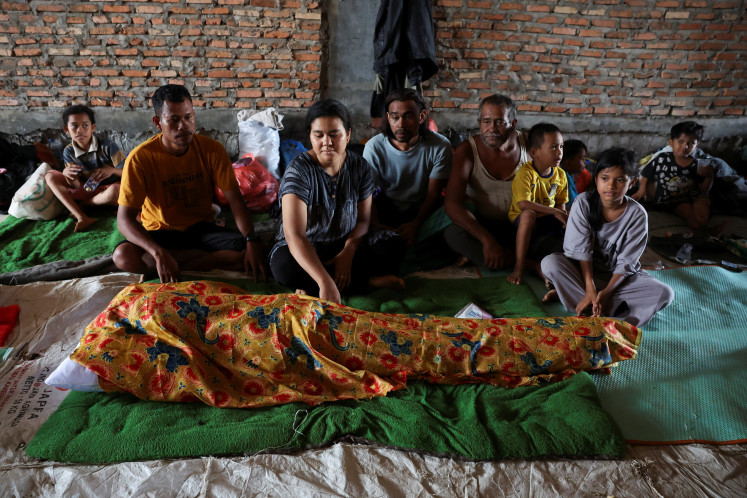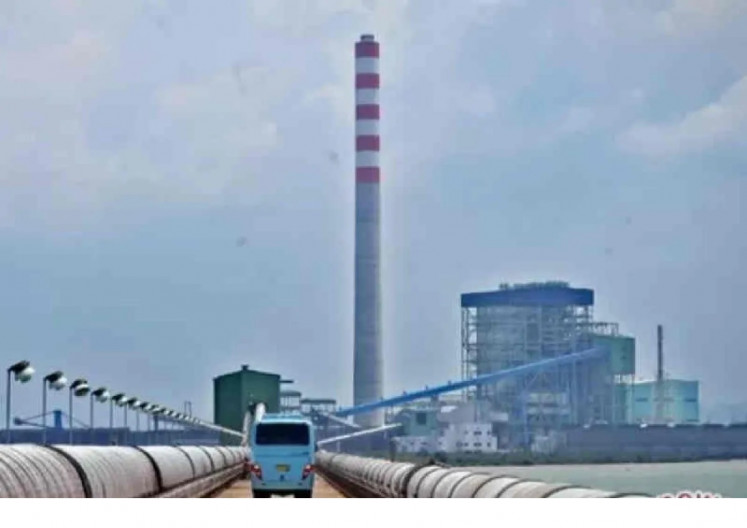Popular Reads
Top Results
Can't find what you're looking for?
View all search resultsPopular Reads
Top Results
Can't find what you're looking for?
View all search resultsChevron Geothermal abandons Lampung project
Chevron Geothermal Indonesia has handed over its working area in Lampung, Sumatra, to the local government, amid increasing concerns on the realization of the countryâs extensive plans to tap into volcanic power
Change text size
Gift Premium Articles
to Anyone
C
hevron Geothermal Indonesia has handed over its working area in Lampung, Sumatra, to the local government, amid increasing concerns on the realization of the country's extensive plans to tap into
volcanic power.
The director general for renewable energy at the Energy and Mineral Resources Ministry, Rida Mulyana, said that Chevron Geothermal had decided to return its working area in Suoh-Sekincau, Lampung, to the local administration.
'The company said that its early survey showed that it failed to find steam at an economical level to continue the geothermal project,' Rida said.
Chevron Geothermal currently has two major operations, with the Darajat and Salak plants. The capacity of the company's existing geothermal plants reaches 647 megawatts (MW) in Indonesia, where total geothermal capacity reaches 1.4 gigawatts.
Chevron Geothermal's general manager for policy, government and public affairs, Paul Mustakim, could not be reached for comment.
The company won a tender to work on Suoh-Sekincau in 2010. It has undertaken geological and geophysical assessments, according to its website.
The company initially estimated that Suoh-Sekincau could provide about 200 MW in power-production capacity.
Indonesia is estimated to have abundant geothermal potential of up to 29 gigawatts. However, attempts at large-scale development have been hampered by the issue of the usage of conservation areas and financing. Tapping geothermal potential is known to be a high-risk business in which developers need to disburse millions of dollars for drilling without certainty about the amount of steam that can be obtained.
The government has been planning to develop numerous geothermal power plants, including plants around 4.97 gigawatts, which is part of the second phase of a fast-track electricity procurement program of 17.92 gigawatts in total capacity.
However, progress is sluggish and the development of the power plants is expected to be fully completed by 2022.
Meanwhile, the local administration in West Nusa Tenggara has also received a proposal from the developer of the Hu'u Daha geothermal plant, PT Pacific Geoenergy, to return its working area. Hu'u Daha is estimated to have geothermal potential of 20 MW.
'We will evaluate what we will do with the returned working areas. If the areas are auctioned again, the process will be carried out by the central government,' Rida said.
Under previous regulations, tenders for geothermal working areas were held by local administrations. However, the new Geothermal Law passed recently withdrew local administrations' authority to hold auctions and gave the right to the central government to ease supervision and accelerate projects.
__________________
'The company said that its early survey showed that it failed to find steam at an economical level to continue the geothermal project.'










